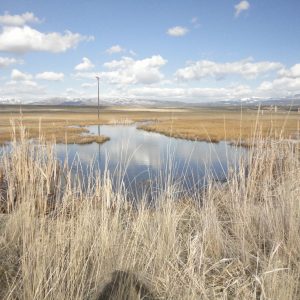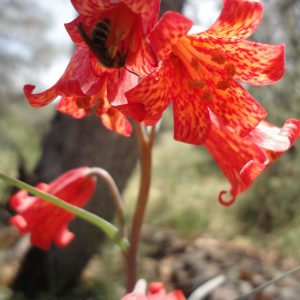May 1st, 2012.
I arrive at the Alturas field office at 6:30 in the morning. The sky, except for a few puffs of white cumulus clouds, is clear. The sun is rising over the Warner mountain crest. Soon my mentor Mike Dolan and I get our things together and head West to some BLM land near Fall River Mills, in Shasta county.
We pull up on the side of a dirt road and I slurp down the last of my tea. With a handlens and a Trimble GPS unit dangling from my neck and clutching a field journal, I follow Mike as he hastily walks off the roadside into the adjacent grazing allotment. My head tilted down, at first I think nothing is blooming. Then specks of pink, yellow, blue, and white catch my eye. My mind leaves the realm of roads, signs, and distant scenery and a tiny world appears before me. I practically fall down as I get on my knees and elbows, putting my face an inch away from a flower less than a centimeter wide. I whip out my handlens, through which the minute blip of color becomes a detailed scene of texture and structure that my eyes normally fail to see. My mind races, dredging up strands of botanical knowledge that are mixed in with every other random thing I have crammed into my brain over the years. Polemonaceae? A Gillia, A Phlox? Mike soon confirms or corrects my guesses. I hurriedly scrawl down unfamiliar syllables, trying to keep up as he rattles off Latin like its his first language. A seasoned botanist who has worked in this area for decades, he seems to know every plant even if it isn’t flowering, including the many grasses.
One grass in particular is the reason we have stopped at this exact spot. Mike explains that the Poa secunda growing in the low sagebrush habitat here is about 20 centimeters tall and sets seed in June. Up the slope, amidst the ponderosa and grey pine, is another type, which grows 1 meter tall and sets seed in July. He throws his hands up as he exclaims that “they” have listed these grasses as the same species. He is of course talking about plant geneticists, and one project he will have me working on is a garden study. We will collect seed from these and other varieties of Poa secunda. They will be grown out in the same soils under the same conditions. If in this controlled setting they still exhibit the same drastic phenotypic variation, then they surely must be different species. If they all look the same, then we will know that they are all one species that varies considerably under different conditions. The motivation for this project is much more practical than just spiting the geneticists. Say for example a hot fire rages through some low sagebrush habitat. Mike decides to seed the area with Poa secunda in order to give the perennial native bunch grasses a fighting chance against the encroachment of exotic annual grasses like cheat grass and medusa head in the ensuing battle of succession. He orders Poa secunda seed. The seed happened to be collected from the variety that grows in pine habitat, but mike has no way of knowing this because all Poa secunda seed is labeled the same. This much larger, taller variety is unfit for survival in the shallow soil and harsh exposure of the low sagebrush habitat, so the seeding fails. This raises an interesting question for me: what should dictate the names that we choose for plants? In a case like this where it is no doubt a close call, should our priority be genetic accuracy or practical needs? Either way, it is exciting to be on the front lines of plant taxonomy.
This and many other questions regarding fire ecology, grazing, noxious weeds, succession, and our role in it all swirl in my mind as we drive to other sites. I forget them as soon as we arrive at our lunch spot. We sit on a cliff of black volcanic rock with red larkspurs and psychedelic lichens nestled in it, surrounded by a panorama of snowcapped mountains including Lassen and Shasta. I start thinking that field botany might be a good career for me.
Joe Broberg
Alturas BLM



